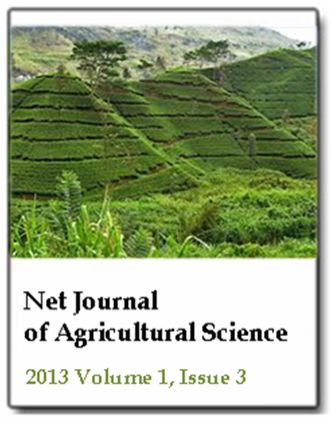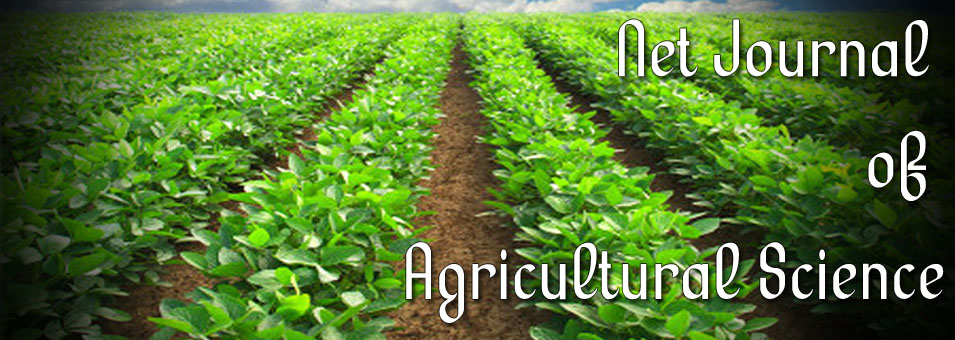Profitability and technical efficiency among the beneficiary crop farmers of National Fadama II Project in Adamawa State, Nigeria
A. A. Girei and B. DireNet Journal of Agricultural Science
Published: September 20 2013
Volume 1, Issue 3
Pages 87-92
Abstract
The study assessed the profitability of Fadama II project facilities supported ton crop farmers in Adamawa State. Data were collected on a sample of 160 farmers and were analyzed using descriptive statistics, budgetary technique, linear programming and stochastic frontier production function. The findings from the study showed that the gross margin per hectare from these enterprises ranged from ₦41,715.86 for sole maize to ₦75,071.84 for sole rice. The result of the linear programming revealed that only two of the six enterprises entered the programme, these are sole rice and vegetables enterprises. The existing farm plan allocated 1.56 hectares to sole rice and 0.77 hectares to vegetables, while the optimal farm plan generated from the LP allocated 0.60 hectares to sole rice and 0.77 hectares to vegetable enterprise. The maximized total gross margin (TGM) from these two enterprises per hectare is ₦100,261.90. The sensitivity analysis reveals a significant difference between the plans. The vegetable enterprise had existing plan per hectare of ₦71,955.14, with an optimized plan per hectare of ₦111,887.18, indicating that vegetable production in the Fadama areas of the State brings in more profit per hectare. It is however recommended that, Government should take renewed interest in dry season production by strengthening support and public-private partnership so as to boost production and win niche markets with a challenge of making better markets for farmers.
Keywords: Profitability, technical efficiency, Fadama II, crop production.
Full Text PDF
